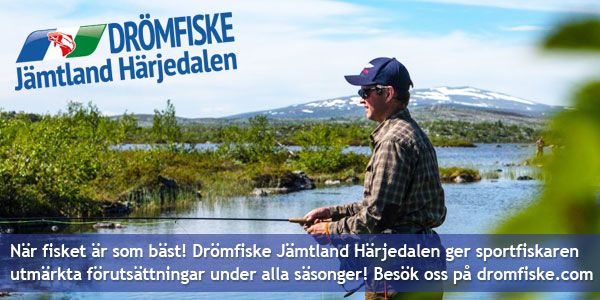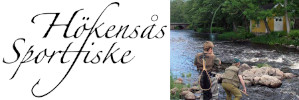User menu
Supply details for your fishing permit(s)! Viskan (Kullagård, Åsbro) (500 kr/item)
The text on this page is machine translated. We can not guarantee that the translation from Swedish to English is 100% accurate. Please refer to the Swedish page for the correct, original version of the text.
Fishing rules for the Torstorp-Vallby-Veddige community association
Adopted at the annual meeting on March 6, 2024.
General rules regarding fishing licenses
1. Everyone who fishes in the Torstorp-Vallby-Veddige community association must have taken part in and fish according to the rules below as well as the rules of conduct regarding salmon and sea trout fishing!
2. All fishing licenses are purchased via iFiske.se https://www.ifiske.se/fiskekort-viskan-kullagard-asbro.htm
3. Anyone who has purchased a fishing license must be prepared to show the fishing license on their mobile phone. Holders of fishing rights must be able to provide identification.
4. Fishing may only take place at fishing spots and not from a boat or from the Kullagårdsbron. Fishing right holders may fish from a boat as long as it does not interfere with fishing from land.
5. At Åsbro, whoever has a fishing license can fish from the northern part of the bridge. The southern part of the bridge is not part of the Torstorp-Vallby-Veddige community association.
6. Constitutions and statutes, both general and specific to each county, must be carefully observed.
7. Everyone up to and including 15 years of age fishes for free without a fishing license.
8. Fishing licenses for young people aged 16-18 are free but must be booked via iFiske. There are five fishing licenses per day. This fishing license is valid for the entire route.
9. Violation of current regulations results in the immediate forfeiture of the right to fish.
10. Along the entire Torstorp-Vallby-Veddige community association, common law applies to forest and land. Not disturb not destroy.
Salmon and sea trout
1. Fishing season for salmon fish is April 1 - August 31. Salmon fish means salmon and sea trout. During the month of September, the fish must be allowed to spawn undisturbed in order to increase the population.
2. A maximum of three salmon may be caught per person and season, 1 April - 31 August.
3. Max one caught salmon per person per day. Captured fish also includes fish that are released (see the rules of conduct below), but does not apply to hatched fish (besa), salmon under 45 cm and sea trout (see point 4).
4. Hatched fish (besa) and salmon fish under 45cm must be re-released (see the rules of conduct below). These fish are not included in the quota as caught fish. Sea trout that are released do not count towards the quota.
5. All fishing must be barbless and with a single hook. Applies regardless of fishing method.
6. Fishing may only be done with sport fishing gear such as a rod by hand. One fishing gear at a time may be used.
7. Minimum dimensions of braided line 0.20. Minimum size of nylon line 0.30.
8. Registration of all catches must take place no later than 24 hours after the catch at I-fiske ( https://www.ifiske.se/fisketips-viskan-kullagard-asbro.htm ). Fishing right holders must report catches no later than 24 hours after the catch via email to the association's email address: tvvviskan@gmail.com.
Pike and other white fish
1. The season for pike is October 1 - March 31.
2. Pike over 80cm must be released again.
3. Fishing may only be done with sport fishing gear such as a rod by hand. One fishing gear at a time may be used.
4. Pike fishing is only conducted in calm water and according to the maps on iFiske.
5. Fishing for other whitefish follows the county board's rules.
The rules of conduct below apply to fishing in the Torstorp-Vallby-Veddige association.
As an angler, you are responsible for handling the fish correctly, regardless of whether you are going to catch the fish or release it. The health of the fish always comes first.
When drilling a fish, the goal is always to land the fish as quickly as possible. Drilling time must always be minimized regardless of whether the fish is to be taken up or released again. Being careful when drilling for fear of losing the fish does not benefit the fish when released. Overproduction of lactic acid in the fish's muscles increases the stress on the fish. This contributes to physiological disturbances which can lead to the death of the fish. High water temperatures (over 16 degrees) result in poorer oxygen conditions in the water, which leads to greater lactic acid production during drilling. Lactic acid production increases regardless of temperature and oxygen conditions in the water, but is lower at colder temperatures.
The fish must never leave the water when landing . If you use a net as an aid when landing the fish, the fish must be guided into the net with your fishing equipment. Trying to catch (hunt) the fish with the net is stressful and increases the risk of the fish escaping or being injured. Never lift the fish in the net, but leave the fish and net in the water. Also make sure that the fish does not lie and rub against the bottom, stones or the like.
Always wet your hand before wrapping around the fish's tail coil. Never catch the fish anywhere else. Never grip the tail spool with more force than necessary. Release the hook from the fish's mouth when the fish is in the water. Again, also make sure that the fish is not lying and rubbing against the bottom, stones or the like.
Once you have removed your bait from the fish's mouth, hold the fish for a while around the fish's tail spool and again with no more force than necessary. Aim to keep the fish as loose as possible. Rest the fish against your other palm, placing it behind the pectoral fins and not directly under the abdomen. The fish must always be kept under the surface of the water. Always point the fish's head in the direction of the current so that the fish gets oxygenated water. Let the fish take its time to recover. When the fish wants to swim on, you release the tail spool. Never pull the fish back and forth in the water to "start" the fish, every time the fish is pulled back and the water flows in from behind the gill openings, no oxygen is supplied. If you landed your fish in completely still water, you go out with the fish into the water where the current begins.
Salmon fish are generally the species that require the most oxygen in the water. Hot water binds oxygen very poorly. Here follows an example of how the oxygen content depends on the water temperature.
The amount of oxygen that can dissolve in the water depends on the water temperature, in 1-degree water about 14.25 mg per liter dissolves, in 10-degree water only 11.25 and if the water temperature rises to 20 degrees no more than 9 mg/ liter. Sea trout require the most oxygen, approx. 14 mg/litre and salmon approx. 12 mg/litre on average.
When you drill your fish, the fish's oxygen consumption increases, re-exposing your fish reduces the chance that the fish will survive at higher temperatures. With longer drill times and 16 degrees in the water, the risk of a restocking not being successful increases. From 20 degrees in the water you should not fish if the goal is to release the fish.
Regardless of salmon or sea trout, the vulnerability is greatest when they are fresh from the sea. At the same time, it is the longing of many anglers to catch a new fish on the hook. The risk is that the drill time will be longer because the fish has more energy and the fish's musculature is significantly looser and thus more sensitive to handling. The fish's scales are also very loose and the scales' main function is to protect the fish. Under the scales, in the skin of the fish, there are glands that produce the fish's mucus layer which, among other things, protects the fish from bacteria. The mucus layer is significantly thinner on newly hatched fish and therefore more easily damaged. Bleeding newly hatched salmon must not be returned.
Fish that have been in the river for a while have a thicker mucus layer, the musculature is significantly "harder" and the scales are firmer. All fish, however, must always be handled correctly (see above), even if a newly hatched fish is always more vulnerable.
The health of the fish always comes first. Reintroducing a fish works very well as long as the conditions and handling are met. Make sure your equipment is adapted to the fishing you want to do and the conditions. And don't forget that your experience and story is worth more than a photo of the fish.





